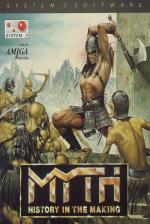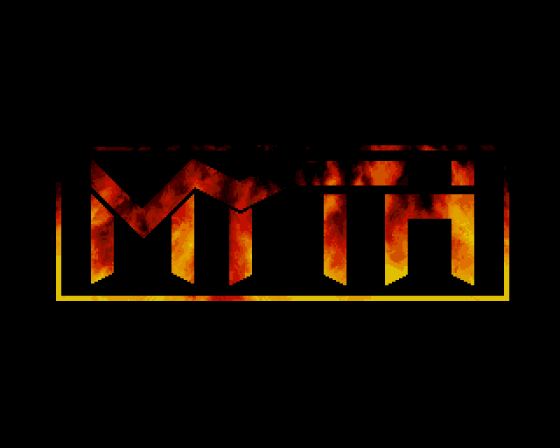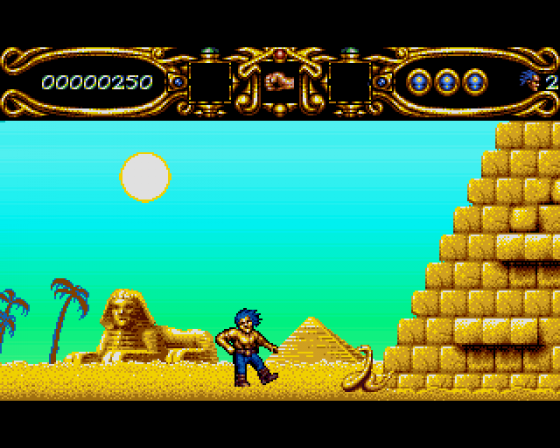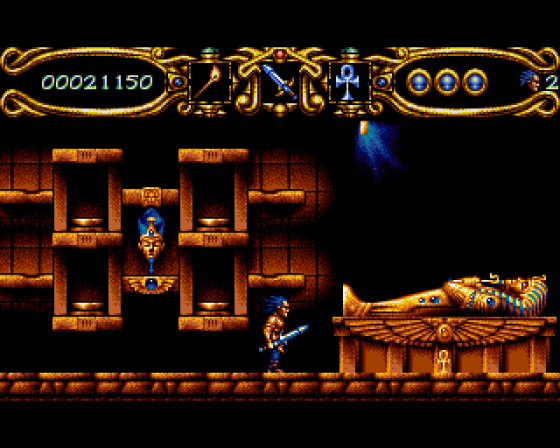
Amiga Power
 1st July 1992
1st July 1992
Categories: Review: Software
Author: Gary Penn
Publisher: System 3
Machine: Amiga 500
Published in Amiga Power #15
Myth
Here's a game that's been underway almost as long as Epic, but now, just like Epic, it's finally here. This is the fourth version of Myth - but have they at last got it right?
System 3 are a funny bunch. Not in a laughably deformed banana-like way you understand, but because of their peculiar 'law unto themselves' modus operandi. The sad thing is that this is obviously a publisher that cares about providing value for money and having good products out there, yet which is having real trouble providing them.
The story can be told fairly simply. Old C64 fans will remember when System 3 were recognised as one of the top developers, with games like the original Last Ninja and IK+ scoring in the nineties everywhere - a remarkable record, but perhaps not quite so surprising when you realise the talent behind the games, included such luminaries as Mev Dinc (of First Samurai fame) and Archer Maclean. The move onto 16-bit has been a surprisingly tricky one, however, with numerous false starts - perhaps the big name programmers (who've since moved on) have proved impossible to replace, perhaps the games they've done have remained too 8-bit in style.
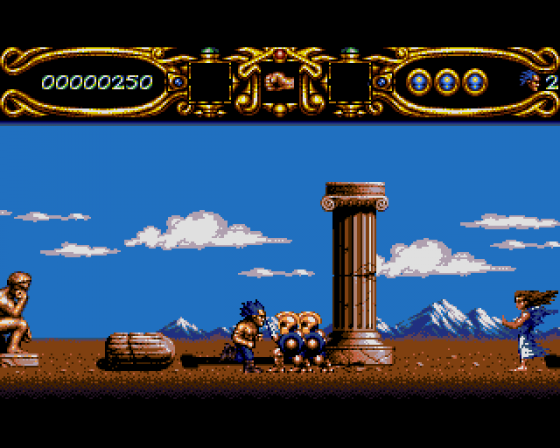
Whatever the past, this, System 3 insist, is the Amiga game that'll really crack it for them. To ensure this is what happens, the company has scrapped three versions so far, apparently due to their poor quality, and have devided to go with this fourth attempt. It's not a bad game, indeed there's much to praise about it, but I can't help feeling - especially in the light of rivals like Leander, Gods or, indeed, First Samurai - that they've still to hit the spot. And I think that's a shame. I really do.
But, before I continue, let's take this brief opportunity to fill you in on the storyline. Fans of the (quite spectacular) 8-bit versions of the game from a couple of years ago will be familiar with the basics of it, though a few things have changed since then. As with the 8-bit versions, a Bad God (Dameron) has corrupted assorted Good Gods from various ancient religions - the future of the human race is at stake (of course), which forces you on a mission to put things right, one spread across four time zones. There's an Ancient Greek level, a Norse level, a Celtic and an Egyptian one, each presented as part of a three-disk, five-level mixture of four basic game styles: run 'n jump romp, shoot-'em-up, beat-'em-up and arcade adventure. Each mythological period, or level, is split into three sections, while an extra fifth stage forms the eventual two-part showdown with Dameron, set somewhere in the timeless void.
So how do these levels work? Well, first up is the Greek one, which concentrates on your jumping from one floating ledge to another and fighting different types and sizes of mythological beasts against a lava-strewn, hell-style backdrop. Level Two, on the other hand, is almost the opposite - there are no platforms, and the emphasis is on combat, set in a spooky Celtic forest.

The third stage, in which you eventually get to fight the Norse gods Thor and Odin, consists mainly of leaping around and hacking, while the fourth one, set in Egypt (and chiefly inside a labyrinthine pyramid) requires small amounts of mapping, the solving of logic problems, and a certain amount of combat and precision jumping.
Then there's the fifth and final shoot-'em-up section. It's action all the way here as - set, against a backdrop of stars - you have to blast fixed attack patterns of Dameron's creatures before taking him (or it) on directly.
And that's it. One of the biggest changes to the game since the 8-bit originals - and one of the things that seems to have been modified with each (now scrapped) version System 3 have put together - is in the main character. Originally, he was a Michael J Fox-style everyman, in jeans and trainers, somehow dragged into saving the world. Then he was a squat, rather evil-looking console game-type. Now he's mutated again, into a slimmer, taller barbarian warrior, modelled to some extent, it would appear, on 2000AD's character Slane.
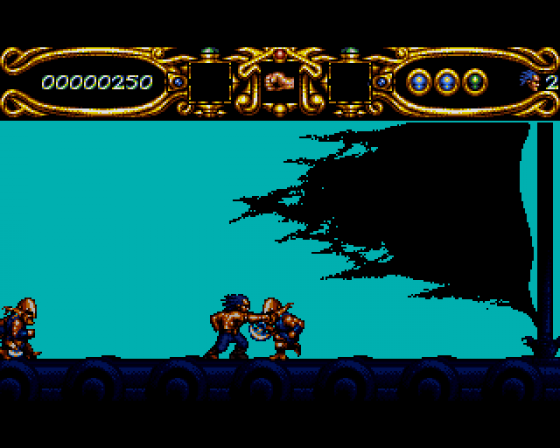
One thing that hasn't changed, though is System 3's basic way of structuring a game. At first glance you'd probably say the company is attempting to shake off its Last Ninja image with this game, and - certainly - it looks quite different. However, look beneath the surface and you'll see the structure is more or less the same.
In all but the last load the action is punctuated by a series of arcade adventure-style puzzles to solve. Here's one: how do you pass the big monster at the end of the first level. Hades? Look at the picture captions for some heavy clues as to the answer, and while you're doing so consider this - is this really a logic problem at all, or merely a question of trial and error? The solutions are usually so unobvious - much like those (eventually) found in the Ninja series - that you're more likely to stumble across them accidentally than really work them out. In doing so, you'll probably find yourself dying many, many times, and we all know how frustrating that can be...
The problem is given further emphasis by the sizes of the levels - all fairly small - so a good deal of your playing time is likely to be spent mucking around with the three or so main puzzles you'll find per load. It all makes the game experience a little too linear for my liking - there's little of the flexibility needed to keep your on-going interest high. Once you've finished the game, there seems little point in playing it through again.
Game Logic Mything In Action
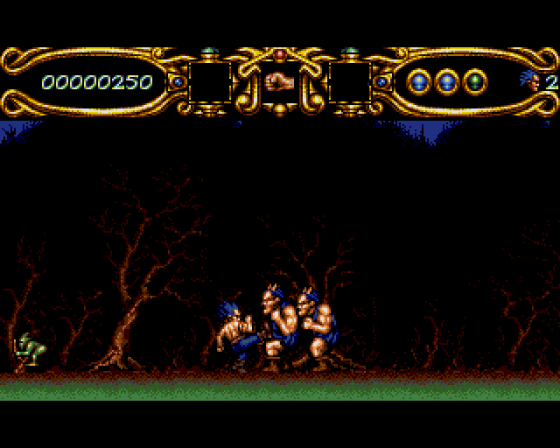
So where does that leave us? Well, with a disappointing game, and one where the whole tends to be less than the sum of its parts. In many ways, Myth is too ambitious for its own good, falling between the two, not three, but four different stools. In short, there are too many different bits to it, each one is too short to really grab the interest, and the overly linear puzzle solving game style means it's a game you'll only want to play through once. It's a shame, considering how many good things there are in Myth. Like these, for instance:
For a start, there's over 700K of sound in Myth, and to be fair it shows. Almost every action or event has a suitable sampled sound, and most of them are a pleasure to hear. There's always some background noise for atmosphere - take the roaring flames and screams of tormented souls in Hades (which grow louder as you get near) for instance, or the thunderstorm in the Celtic forest. There's some speech too, and that works well enough.
Then there are the visuals. The main character alone has 175 frames of animation, used to show him running and jumping and fighting (often while casrrying an object at the same time). It looks nice, though I can't help feeling we'd be better off without a few of the poses and with a bit more effort spent on making him move faster, and in less of a stop-start fashion too. Seeing our hero's arms pull back in preparation for a punch, or seeming to make a real effort to jump and land, is all very well, but gets frustrating when he should simply be running faster.
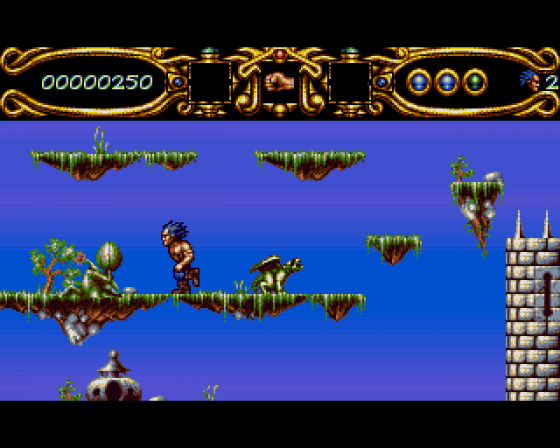
It's a nice looking game then, and one which seems to have garnered rave reviews elsewhere, but I can't help feeling it's all a bit of a - and sorry about this - mythed opportunity. We're not going to be looking back on this as a classic a year on from now, and considering the high targets System 3 are (quite rightly) setting themselves, it has to be seen as some sort of failure. An okay buy, but little more.
The Bottom Line
Uppers: Novel - and occasionally playable - blend of game styles: beat-'em-up, shoot-'em-up, run 'n jump and arcade adventure, presented with some sporadically beautiful graphics. Control of the hero is intuitive and easy to handle - and the limited edition version comes with a free full-colour comic book!
Downers: The main character's main animation frames mean that his movement is sometimes too sluggish for comfort. There's actually not a great deal to do either - the levels are fairly small, the 'puzzles' sometimes annoying, and the game structure really rather old-fashioned in feel.
System 3 certainly get an 'A' for effort. Myth is a well-researched and, by and large, lively project with high-spots of gloss and variety. Unfortunately, it lacks real depth. Look out for the sequel, Dawn Of Steel (System 3 isn't sure when that will happen, as it's still at the storyboard stage) and remember, you'll need one megabyte or more of RAM.
Other Reviews Of Myth: History In The Making For The Amiga 500
Myth (System 3)
On the Commodore 64 he was dressed in a T-shirt and jeans. Now he's bared his chest, grown his hair, and gone for the barbarian look. System 3's hero has grown up.

